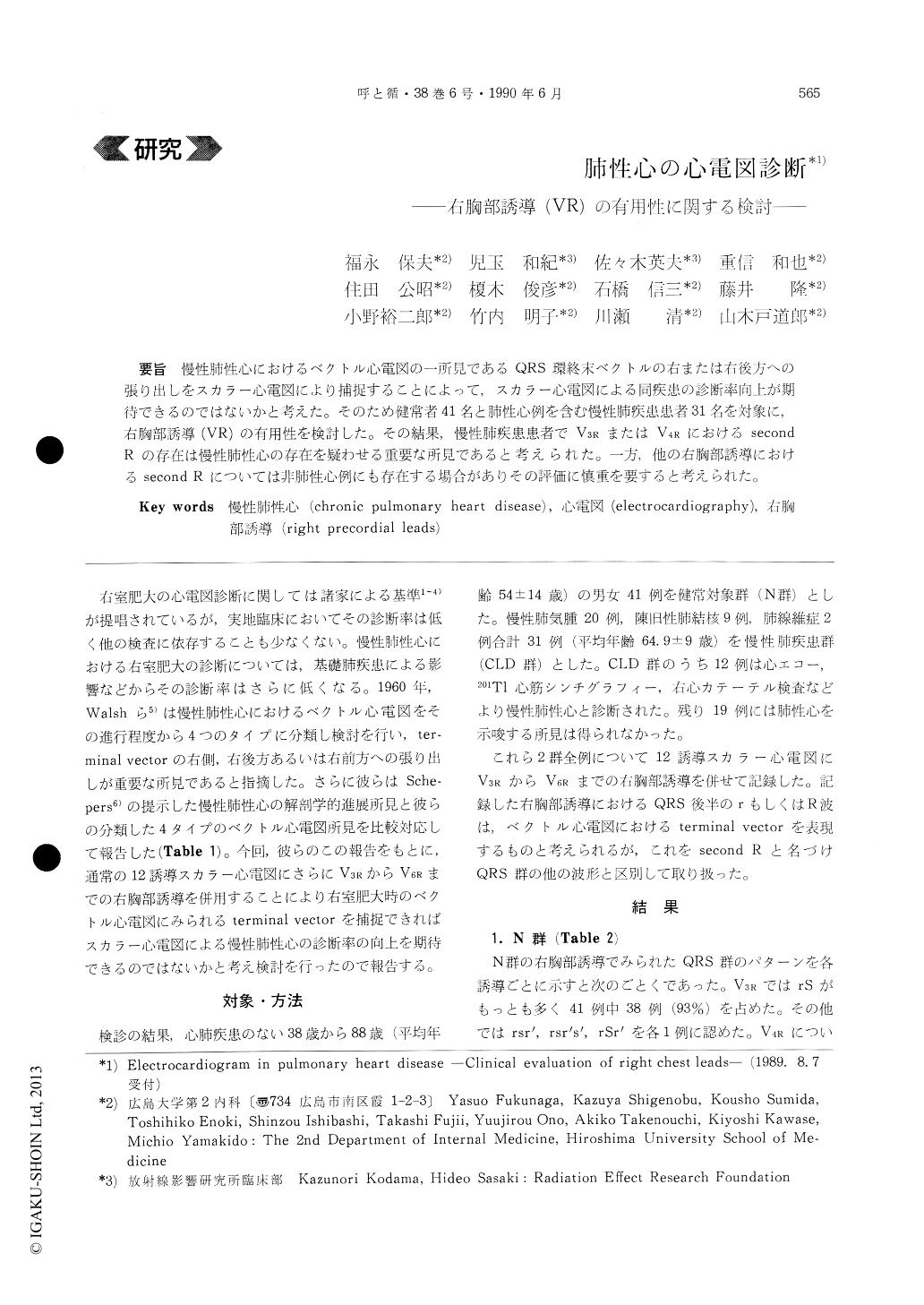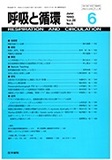Japanese
English
- 有料閲覧
- Abstract 文献概要
- 1ページ目 Look Inside
慢性肺性心におけるベクトル心電図の一所見であるQRS環終末ベクトルの右または右後方への張り出しをスカラー心電図により捕捉することによって,スカラー心電図による同疾患の診断率向上が期待できるのではないかと考えた。そのため健常者41名と肺性心例を含む慢性肺疾患患者31名を対象に,右胸部誘導(VR)の有用性を検討した。その結果慢性肺疾患患者でV3RまたはV4RにおけるsecondRの存在は慢性肺性心の存在を疑わせる重要な所見であると考えられた。一方,他の右胸部誘導におけるsecond Rについては非肺性心例にも存在する場合がありその評価に慎重を要すると考えられた。
A clinical study was made to evaluate the useful-ness of electrocardiograms in right precordial leads (V3R or V4R) for the diagnosis of cardiac complica-tions among patients with chronic pulmonary disease.
Walsh and colleagues reported that the change of direction in the terminal vector of QRS loop in the vector cardiogram is useful for the evaluation of chronic pulmonary heart disease. They showed that the terminal vectors of QRS loops tend to deviate to the right and/or posterior direction in the early stage of chronic pulmonary heart disease.
We utilized the electrocardiograms in the right precordial leads to detect the second R waves, which are thought to reflect the terminal vectors of QRS lo-ops in the vectorcardiograms. When the electrocar-diograms in the right precordial leads were compared, the second R waves in leads V3R or V4R were more frequently observed among patients with chronic pul-monary heart disease than those without. However, in the same two groups, the frequency of second R waves in leads V5R or V6R didn't differ. We conclude that the second R waves in leads V3R or V4R in a pa-tient with chronic lung disease suggest the presence of chronic pulmonary heart disease as a complication.

Copyright © 1990, Igaku-Shoin Ltd. All rights reserved.


